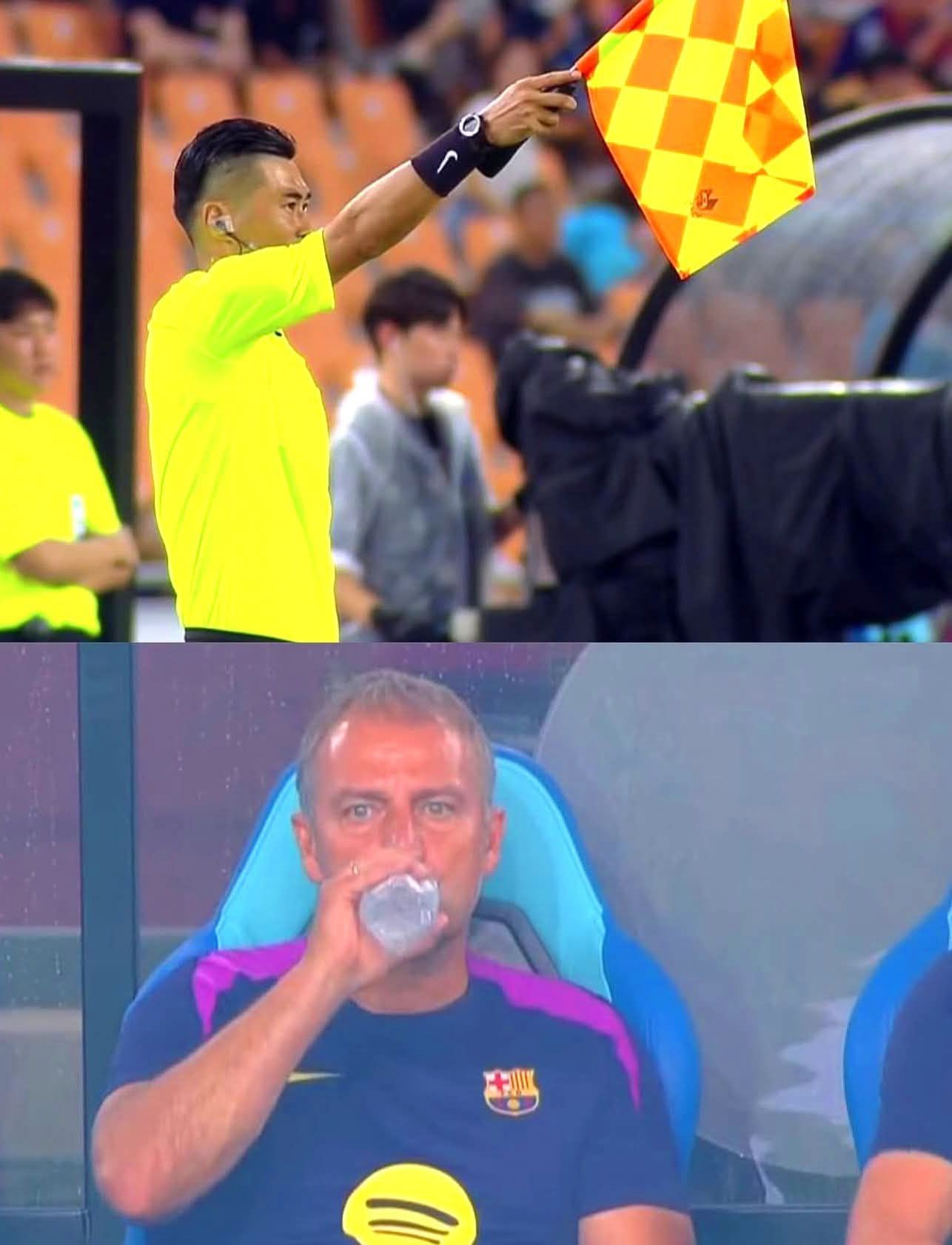Sport
Barcelona’s Offside Trap: A Tactical Art Form

Barcelona have elevated defensive discipline to new heights this season, with their offside trap emerging as one of the most defining aspects of their tactical identity under new leadership. Far from being a risky gamble, the trap has become a calculated and highly rehearsed weapon — executed with surgical precision and underpinned by relentless training, deep trust, and flawless timing.
In their latest match, the effectiveness of the offside strategy was on full display. Within just 14 minutes, Barcelona’s backline had already caught their opponents offside five times. It wasn’t a coincidence — it was a statement. Every offside flag was the result of meticulous positioning, synchronized movement, and a sharp reading of the game.
Much of this precision stems from the partnership between defenders like Ronald Araújo, Jules Koundé, Andreas Christensen, and the ever-composed goalkeeper Marc-André ter Stegen. Their chemistry and communication allow them to move as a single unit — stepping up at exactly the right moments, leaving attackers stranded and frustrated.
What makes this even more impressive is that the offside trap is not just about defending; it’s about dictating the tempo. By breaking up plays before they truly develop, Barcelona regain control of the match in an instant. The trap forces the opposition to hesitate, rethink runs, and ultimately abandon their usual attacking rhythm.
Hansi Flick, the man now at the helm, has clearly emphasized structure, sharpness, and spatial awareness — key ingredients in making the high line and offside trap work at an elite level. His Bayern Munich teams were known for similar traits, and now he is transferring that philosophy to Catalonia with notable success.
This form of tactical mastery isn’t without its risks. One poorly timed step forward or a lapse in concentration can leave a striker one-on-one with Ter Stegen. Yet, this Barcelona side seems unbothered by the risks — confident in their timing and fully committed to the system. Their success with it is rooted in discipline and collective belief, not luck.
Barcelona’s use of the offside trap is also psychological warfare. Every time a forward gets flagged, doubt creeps in. Strikers begin second-guessing their instincts, midfielders hesitate to play balls over the top, and teams lose their flow. In this way, the trap not only disrupts — it demoralizes.
Moreover, this defensive organization complements Barcelona’s midfield domination. By holding a high line and compressing space, they force turnovers in advanced positions, allowing players like Pedri, Gavi, and İlkay Gündoğan to immediately dictate play after regaining possession. Defense transitions into attack almost seamlessly.
This system also alleviates pressure on the full-backs, allowing them to venture forward more often, knowing that the core defensive line remains compact and well-drilled behind them. It’s no surprise that players like Alejandro Balde have flourished under such a structure — able to contribute offensively without being exposed defensively.
Ultimately, what we’re seeing isn’t just a defensive strategy — it’s a philosophy. Barcelona are proving that tactical brilliance isn’t just about scoring goals or beautiful passing moves. It can also be about the art of control, of disrupting the opponent before they even get close to goal.
In an era of chaotic pressing and high-scoring shootouts, Barcelona’s offside trap offers a different kind of spectacle — one where discipline, intelligence, and harmony take center stage. It’s a defensive ballet, choreographed in training and performed on the pitch with flair.
As the season progresses, fans and analysts alike are watching this evolution with admiration. Barça’s offside trap is more than just a defensive tactic — it’s a symbol of their renewed identity: bold, smart, and perfectly in sync.

 Sport12 months ago
Sport12 months ago“I’m not trying to criticize Ancelotti, but I’m not happy with him for benching that player”: Bellingham Expresses Frustration Over Ancelotti’s Tactical Decision

 Sport12 months ago
Sport12 months agoBREAKING: Manchester City vs Liverpool Clash Cancelled! Title Race Takes a Twist

 Sport12 months ago
Sport12 months agoArsenal Poised for January Swoop on €70 Million Star Dusan Vlahovic

 Sport12 months ago
Sport12 months agoWHAT ON GOD’S GREEN EARTH DID WE JUST SEE?!

 Sport12 months ago
Sport12 months agoReal Madrid: Carlo Ancelotti’s Surprising Revelations About an Unexpected Quality of Vinicius

 Sport12 months ago
Sport12 months agoBREAKING: Arsenal’s Champions League Quarterfinal Opponent Revealed After Monaco’s Dramatic Win – Tough Challenges Await Arteta’s Men

 Sport12 months ago
Sport12 months agoChelsea Players Facing Suspension as Yellow Cards Mount

 Sport12 months ago
Sport12 months agoKey Arsenal Player Set for Return as Gunners Face Struggling Everton
















